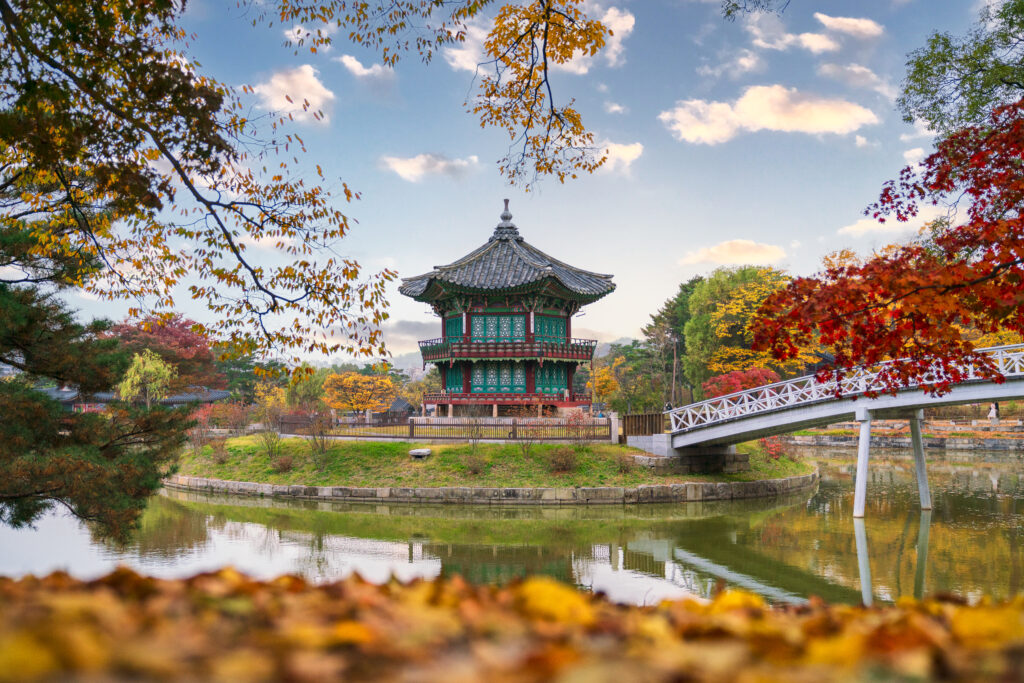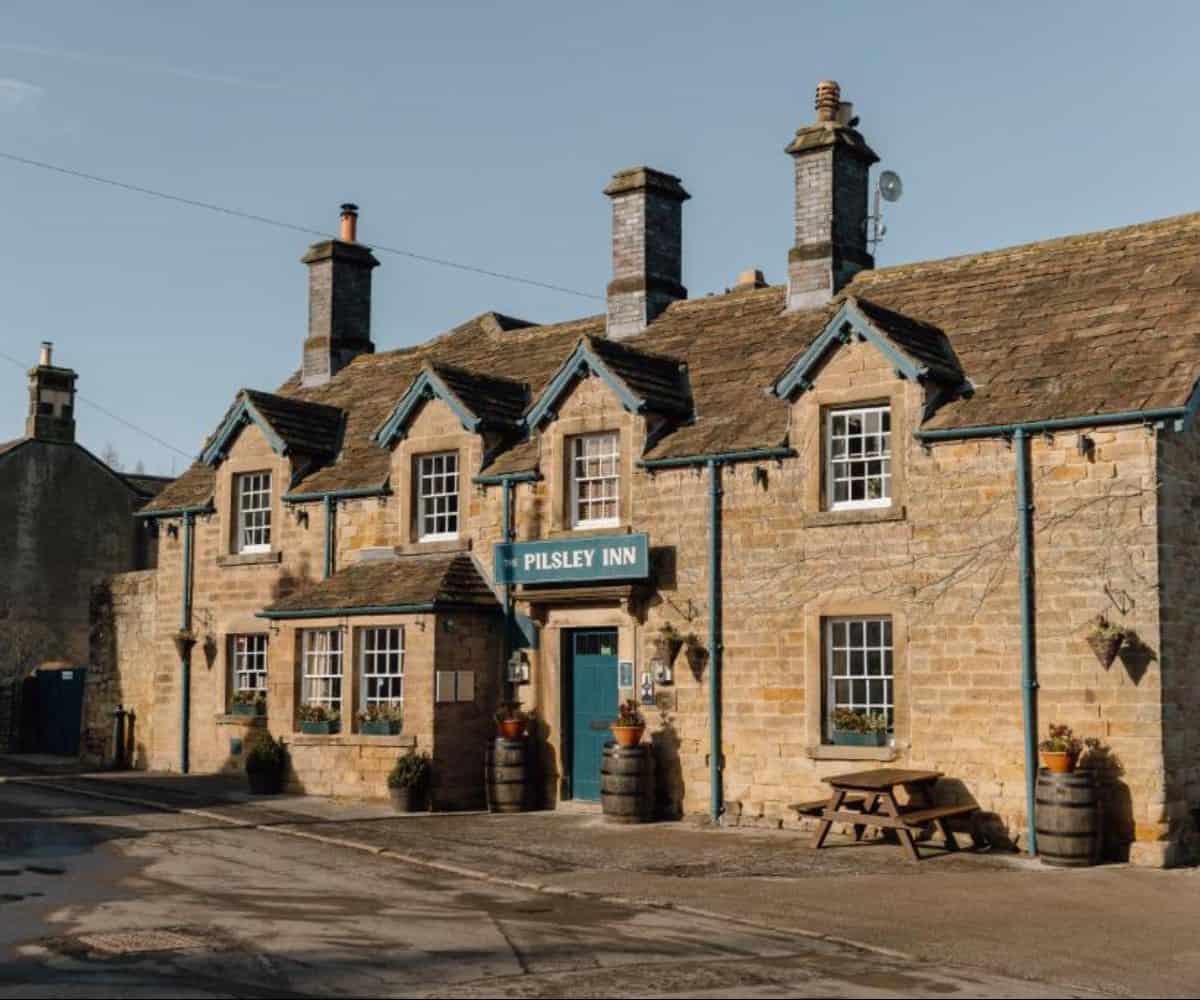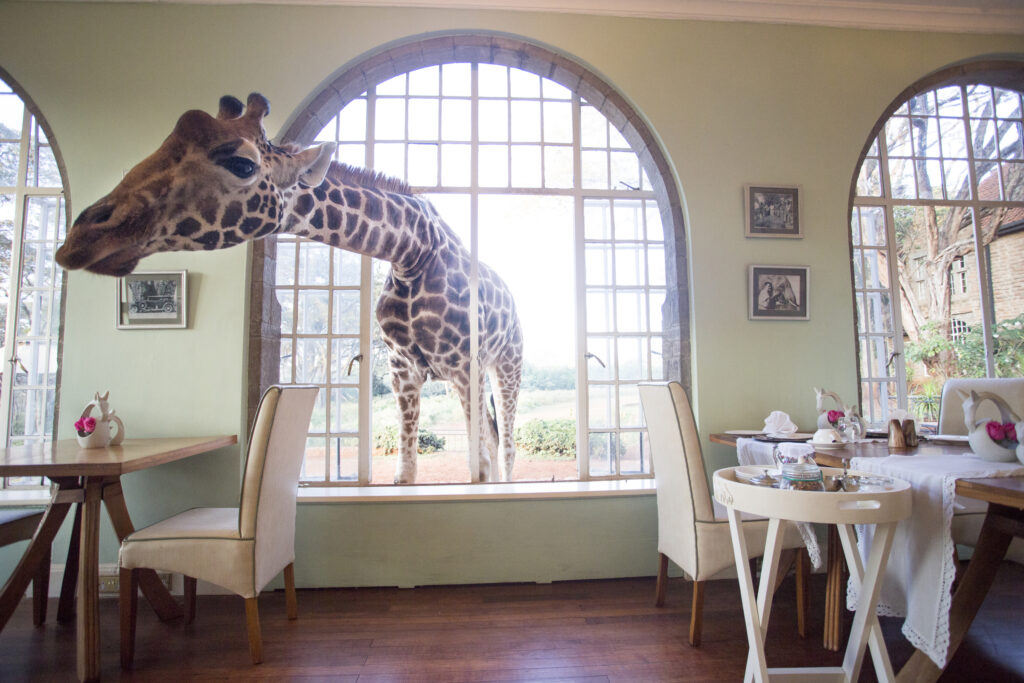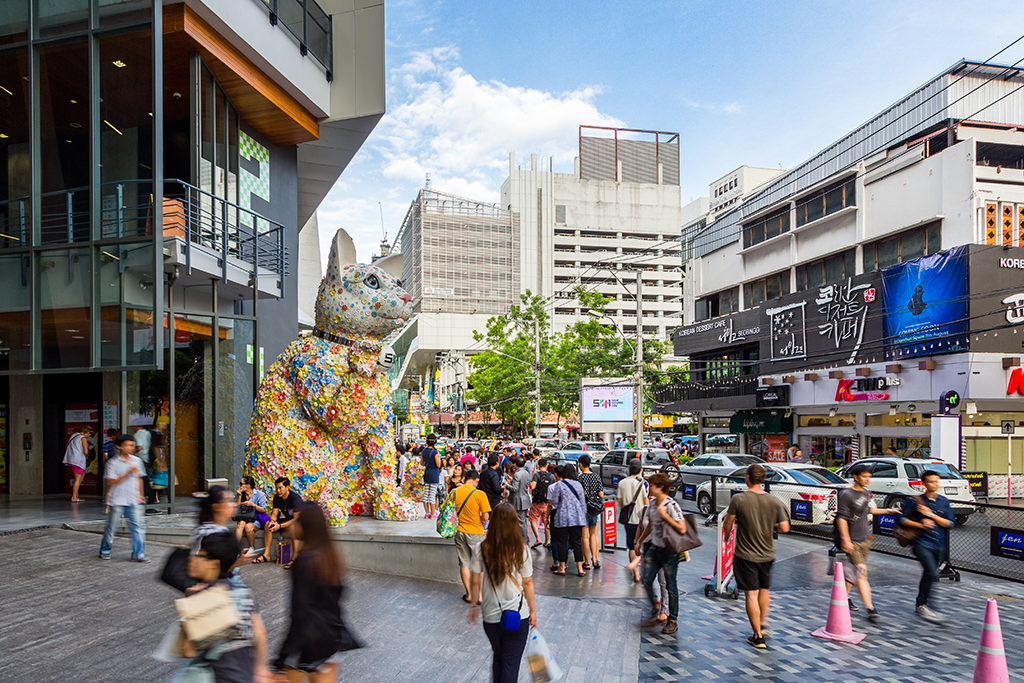Situated in the heart of Leicestershire, Bradgate Park offers visitors an escape into nature, rich history and breathtaking landscapes. It is also a fascinating place to go for a walk, long or short, with far reaching views, wildlife, landmarks and the deer that have been here for many centuries.
Spanning over 800 acres, this picturesque park is not only a haven for wildlife but also a cherished recreational area for locals and visitors alike.
From its ancient trees to the ruins of the Old John Tower, every corner of Bradgate Park tells a story, inviting exploration and appreciation. It has a huge connection with the Grey family, notably Lady Jane Grey.
Whether you’re interested in leisurely strolls, energetic hikes, or simply soaking in the natural beauty, Bradgate Park provides an idyllic backdrop.

I enjoy coming here for all manner and distance of walks. It even features as part of our Leicestershire 3 Peaks Guided Walk.
The Name Bradgate Park
The name Bradgate is a derivation through time that comes from old Norse Viking language meaning ‘Broad or Wide Street’. Another example of this is that roads in the City of York are often called ‘Gate’. It comes from the Scandanavian ‘Gata’.

History of Bradgate Park
Bradgate Park has a big history that dates back to 1241 where the first mention of the deer park exists. However this area has a history that goes beyond this.
During the 11th Century, the time of Edward The Confessor, the area now known as Bradgate Park was part of land, The manor of Groby, owned by a man named Ulf. A Saxon Nobleman.
After 1066, William I gave the land to a colleague who fought with him at the Battle of Hastings, Hugh de Grandmesnil.

Then we get to 1241 where it was now known as a deer park. But much smaller in size than it is today. It came into the possession of the Beaumont family, then the de Quincy family and then onto William de Ferrers of Groby.
In 1445, William’s sole child, a daughter, married Edward Grey. The Park stayed with the Grey Family for nearly 500 years.
The end of the Grey family’s tenure at Bradgate Park came when the 7th Earl of Stamford died in without a male heir in the early 20th century. Firstly, outlying land was sold off plus the village of Newtown Linford was sold off.
Then, in 1928, Bradgate Park was acquired by Charles Bennison, a wealthy businessman, who then gave the park as a gift to the people of Leicestershire. Lots of generosity.
Throughout this history the deer park has accumulated some historic buildings and landmarks that you will find today.
It also lost some buildings over time. There was once a poor settlement or village within what is now the park, called Bradgate.

Bradgate House and Lady Jane Grey
The Greys’ tenure at Bradgate Park is defined by the construction of Bradgate House, a Tudor mansion that stands as a symbol of their rising power and status within the English aristocracy.

Underneath the current ruins of Bradgate House they have found evidence of an older manor house.
The decision to build a new, grand house was made by Thomas Grey, the 1st Marquess of Dorset, who began preparing the land around 1490.
Thomas died in 1501 before construction could commence but his son, the 2nd Marquess, carried the project to completion, with the house likely finished around 1520.
The house was built in an expansive U-plan layout with a Great Hall, private apartments, and service wings. The choice of building materials for Bradgate House was a deliberate statement of power and wealth.
The mansion was constructed with red brick, a material that was both rare and expensive in the early Tudor period. The use of brick was a clear indication of the family’s financial standing and their ambition to impress.
Furthermore, the house was one of the earliest large country homes to be built without defensive fortifications. This architectural decision speaks to the Greys’ confidence and a perceived stability in the realm under the Tudor monarchy.
The family was signaling that their position was secured by political influence and wealth rather than by military strength, a clear shift in the purpose and design of aristocratic residences.
Bradgate House is most famously associated with Lady Jane Grey, the great-granddaughter of Henry VII and great-niece of Henry VIII. It is thought she was born at Bradgate House in October 1537, though recent findings suggest her birthplace may have been London.
Regardless of her exact birthplace, she spent her childhood years at Bradgate, where she earned a reputation for her intellect and scholarship, preferring books to the outdoor pursuits of her family.
Her life, however, was tragically determined by her family’s ambitions. In 1553, at the age of 15, she was forced into a marriage with Guildford Dudley, the son of the powerful Duke of Northumberland. When her cousin, the sickly King Edward VI, died, Northumberland maneuvered to have Jane proclaimed queen on July 10, 1553, in a direct attempt to usurp the throne from Mary Tudor, Henry VIII’s eldest daughter.
Lady Jane’s reign, however, lasted a mere nine days, ending with her imprisonment and subsequent execution on February 12, 1554, at the age of 16.

The legend of Lady Jane Grey’s tragic fate is deeply woven into the fabric of the park’s landscape. A long-standing piece of folklore claims that upon hearing of her execution, the park’s foresters were so grief-stricken that they pollarded every young oak tree in a symbolic beheading, hence their distinctively gnarled appearance today.
While this story powerfully connects the landscape to the personal tragedy of the Greys, a more pragmatic historical explanation exists.
Pollarding was a common practice in estate management, as it kept new growth high up and out of reach of the browsing deer.
The physical reality of the trees’ appearance has therefore been given a profound meaning by the community, transforming a mundane agricultural practice into a poignant act of historical remembrance.
The road to ruin for Bradgate House began in 1694 when a fire broke out said to have been started deliberately by Elizabeth Hervey, the wife of Thomas Grey, the 2nd Earl of Stamford. She was said to be miserable with the life in the countryside.

In 1739 the 4th Earl of Stamford inherited the title and he moved the family seat from Bradgate Park to Enville Hall in Staffordshire. The financial implications of the fire plus complex family strategies all took a part in this decision.
The house then started to fall into the ruin we see today. Much of the brickwork was used over time too for local homes and cottages. If you look carefully, especially at some houses in Newtown Linford, you will find bricks that were stolen from the ruins of Bradgate House.
Old John Tower
Despite the abandonment of Bradgate House, the Grey family continued to shape the landscape of the park, albeit for a new purpose.
The 18th and 19th centuries saw the park transition from a functional hunting ground to a carefully curated “designed landscape” for recreation and aesthetic pleasure.

When I go to Bradgate Park my first thing to do is head up the hill to its highest point. Old John Tower. The park’s most prominent landmark.
As you walk up there take a look back over your shoulder as you get massive views over Leicester itself.

It was built in 1784 by the Greys and the tower is a romanticized Gothic ruin. Its origins are shrouded in a popular but factually inaccurate legend.
According to the tale, the tower was a memorial to a miller named John, who was killed in a bonfire accident during a coming-of-age party for the Earl’s son in 1786. The legend further claims that an archway was added to the tower to make it resemble a tankard, a nod to the miller’s alleged fondness for ale.
However, historical facts challenge this romantic story. Estate maps from as early as 1745 already refer to the hill as “Old John,” predating both the legend and the tower itself.
The tower was, in reality, constructed two years earlier than the supposed accident, in 1784, and was intended purely as a folly. It was presumambly used as a watchtower to view the horse racing practicing going on below on the land.

The wall part that looks like a tankard handle was also most likely much bigger and only looks like that over time as a ruin.
The folly ruin is a reminder of the change of the aristocratic landscape from big land fortresses to land for recreation and leisure.
Cropston Reservoir and River Lin
The Cropston Reservoir was opened in 1870, creating a new eastern boundary for the park. It was the second reservoir built in Leicestershire after Thornton Reservoir.
The reservoirs were built as a response to cholera epidemics that hit in the 19th Century.
To create the reservoir they had to submerge or destroy a few things. One farmer lost almost his entire farm that he was leasing from Bradgate Park. Plus the Head Gamekeeper’s house stood here before it was dismantled prior to flooding.
The River Lin, which flows through the lower park to the reservoir, was enhanced with a Victorian-era cascade and weir, designed to clear silt before the water entered the reservoir.
This picturesque area became known as “Little Matlock” due to its resemblance to the landscape of the Peak District.
Leicestershire Yeomanry War Memorial
Up again on the hill of Old John you will find the prominent Leicestershire Yeomanry War memorial that was built in 1920 to commemorate the Leicestershire Yeomanry that lost their lives during the Boer War and WW1.

At a later date a plaque was added for WW2.
The Deer of Bradgate Park
One of the wonderful things about Bradgate Park is the deer that wander freely around the land. There are around 550 Red Deer and Fallow Deer and every visit means you can watch them roaming the environment.

The deer you see today are said to be descendants of the original herd in 1241.
Actually, walking the footpaths gives you the best opportunities to see the deer. Be careful not to stress them though and keep a respectable distance. Plus keep your dog under control of course.

Geology and Fossils
Bradgate park contains some of the oldest rocks in England, dating back to a time before complex animal life was thought to exist.
Within these ancient strata lies a groundbreaking discovery that fundamentally altered our understanding of early life on Earth. The park’s global importance stems from this unique combination: a rare exposure of half-billion-year-old rock formations that serve as a canvas for some of the world’s most significant fossil finds.
When the rocks of Bradgate Park were forming, the landmass that would one day become England was an underwater landscape located close to the southern tropics, just off the margin of the supercontinent Gondwana.
This environment was not a serene, shallow sea; it was an active volcanic island arc system. Geological and chemical analyses indicate that the magmas that formed these rocks were generated above a subduction zone, a tectonic setting where one plate slides beneath another, leading to intense volcanic activity.
The volcanic eruptions sent plumes of ash and other pyroclastic material into the atmosphere and ocean, which then settled on the seabed, forming thick, layered deposits. The landscape of the park is therefore a relic of this ancient volcanic environment
For decades, geologists and paleontologists grappled with a significant scientific puzzle. It was widely believed that no fossils existed from a period older than the Cambrian, which began approximately 541 million years ago.
This presented a paradox for Charles Darwin’s theory of evolution, as it implied a sudden explosion of complex life without any discernible ancestors in the preceding Precambrian seas. The lack of physical evidence for these early life forms was often referred to as a “missing link” in the fossil record and was a significant challenge to the theory of evolution.
The solution to this paradox came from a remarkable, and unexpected, discovery in Charnwood Forest. In 1957, a schoolboy named Roger Mason was climbing near Woodhouse Eaves when he found an unusual, frond-like fossil. His discovery of this fossil, later named Charnia masoni in his honor, was a monumental moment in scientific history.
It was the first time that a macrofossil—an organism visible to the naked eye—was found anywhere in the world to be of Precambrian age. This single finding provided the physical evidence that validated the long-standing theoretical prediction and opened up an entirely new field of study: Precambrian paleontology.

Importance of Bradgate Park in the Local Community
Bradgate Park now plays a vital role in the local community, serving not only as a recreational space but also as a cultural hub.
For nearly 800 years, Bradgate had been a private asset, a symbol of feudal power inherited through lineage. Bennion’s gift to the county in 1928 represented a profound shift from a system of aristocratic privilege to a modern, civic model of public good.
The land, once a commodity of power, was transformed into a shared public resource, a new kind of “commons.” Bennion’s generosity led to the establishment of the Bradgate Park Trust, a charitable body formed to manage the estate “in perpetuity as an open space or public park”.
The Trust, which also oversees the nearby Swithland Wood (purchased by the Rotary Club and transferred to the Trust in 1931), is governed by a board of trustees nominated by Leicestershire County Council, Leicester City Council, and the National Trust.
This governance structure ensures the park’s future is overseen not by a single family, but by a collective of public and charitable organizations.
Many local residents view the park as an extension of their backyards, a place where they can unwind, exercise, or engage in family activities.
I go to hike, see the deer and to get lots of fresh air. But as you walk the paths in the park you see how it is used for all. Children paddling in the river, families playing on the open grass.

Walking and Hiking Trails
Bradgate Park boasts an extensive network of walking and hiking trails that cater to all skill levels. From gentle strolls along well-marked flat paths to more challenging hikes that lead to the heights of Old John and onwards to Swithland Wood, there’s something for everyone.
Visitor Information
Opening Hours and Entry Fees
Bradgate Park is open all year-round, from 8 am to sunset, with the latest time being 8.30 pm in the summer. The main footpath that cuts through the park is open 24 hours.
Entry to the park is free, but there may be charges for parking in designated areas, which helps maintain the facilities and supports conservation efforts.
Getting to Bradgate Park
Bradgate Park is conveniently located just a short drive from the centre of Leicester, making it easily accessible for both locals and tourists. It is also not far from the M1 at Junction 22.
Car Parks
There are 3 main car parks for Bradgate Park:
Within the village of Newtown Linford is the main and busiest car park. Postcode LE6 OHB.
Hallgates Car Park is at the other end of the main path at the Cropston Reservoir entrance. This the car park nearest the cafe. Postcode LE7 7HQ.
Hunts Hill Car Park is commonly known as Old John Car Park as it is nearest the hill and monument. Postcode LE6 OAH.
Dogs
Due to the many deer that roam the park it is common sense to keep dogs under control on a lead when signage asks.

Conclusion
With its rich history, stunning landscapes, vibrant wildlife, and a plethora of activities, Bradgate Park stands as a natural gem in Leicestershire.
It serves as an escape into nature, a cultural hub, and a beloved recreational area for the community. No matter the season, the park offers something special for everyone, making it an essential destination for nature lovers, families, and those seeking tranquility.
Whether you’re exploring the ancient woodlands, enjoying a family picnic, or attending a local event, Bradgate Park invites you to connect with nature and create lasting memories. Its accessibility and welcoming atmosphere ensure that every visit is unique and fulfilling.
FAQs
What are the opening hours for Bradgate Park?
Bradgate Park is generally open from 8 am until dusk. Hours may vary seasonally, so it’s best to check the official website before visiting.
Is there an entry fee to access the park?
Entry to Bradgate Park is free, though there may be charges for parking in designated areas.
You may also like:
Mount Saint Bernard Abbey Leicestershire
Calke Abbey Ancient Parkland Walks Through the Seasons


















 English (US) ·
English (US) ·